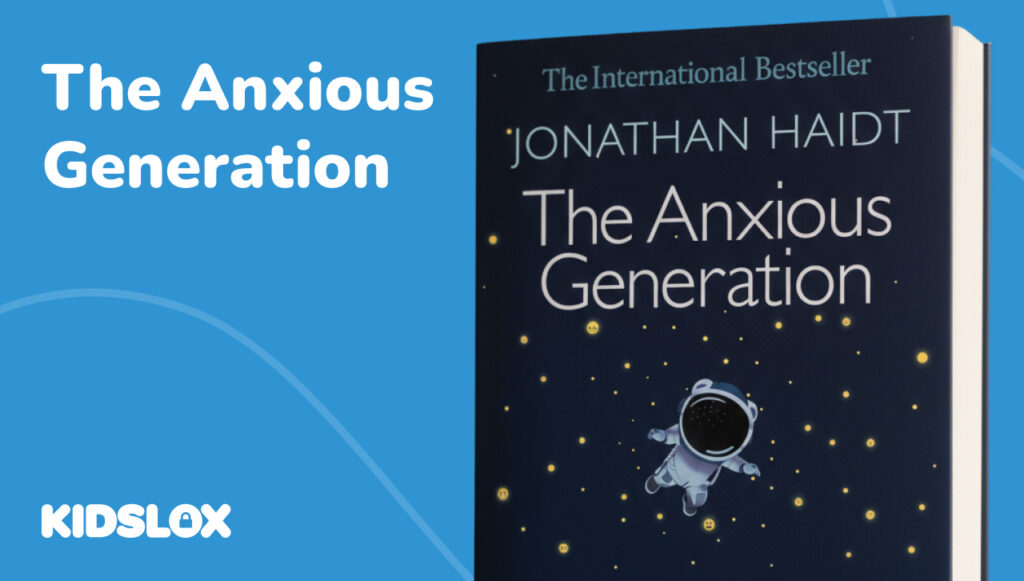How the Great Rewiring of Childhood is Causing an Epidemic of Mental Illness by Johnathan Haidt
Imagine your child gearing up for a mission to Mars. They’re strapped in, launched into unknown territory, cut off from the familiar world, exposed to new dangers and you’re left on Earth, watching anxiously, hoping they’ll be okay.
That metaphor sits at the heart of Jonathan Haidt’s The Anxious Generation. He uses this vivid comparison to explore how today’s children, equipped with smartphones and unfettered access to the internet, are being sent into a digital “space” that’s exciting but also deeply unfamiliar and wrought with potential dangers.
In Haidt’s view, childhood has been rewired. What he calls a “play-based childhood” has been replaced by a “phone-based childhood.” He argues that the shift from free outdoor play with little hand-holding to constant digital connection is fuelling an epidemic of anxiety, depression, and emotional distress among young people.
Why Does Haidt Believe Today’s Kids Are More Anxious Than Ever?
Haidt divides his argument into several key parts. He begins by showing the steep rise in adolescent mental ill health since the early 2010s when smartphones became widespread and social media moved from novelty to necessity.
He then looks back at what changed: how childhood play declined, how independence was replaced by surveillance, and how children gradually lost unstructured time to explore, take risks, and develop resilience.
This set the stage, he argues, for what he calls “the great rewiring of childhood.” By spending hours in digital spaces rather than physical ones, young people have literally changed how their brains develop against 200 million years of human evolution.
Finally, he offers a roadmap for recovery: delay smartphones, delay social media, increase play, reduce screen exposure in schools, and help children rebuild independence and connection in the real world.
For any parent already feeling concerned about their child’s digital life, The Anxious Generation is both validating and illuminating. Haidt writes with urgency but also with clarity, using research and data to build a persuasive argument about the correlation between the smartphone era and rising youth anxiety.
The book’s biggest strength is how it connects personal experience with social trends. Many readers describe it as the first book that articulated exactly what they’ve been sensing: that childhood is changing, and social media may be to blame.
What Parents Will Find Helpful
Despite its heavy message, The Anxious Generation offers plenty for parents to act on right now. The core solutions in Haidt’s message are;
Delay smartphone and social media use: Haidt recommends waiting until children are emotionally ready; ideally, no smartphones before high school and no social media before 16. It’s an uphill battle for many parents, but change is possible. We’re already seeing it in action with new legislation emerging in Australia to restrict children’s access to social media.
Prioritise real-world play: He champions unstructured, outdoor, and even mildly risky play. It’s how children learn courage, independence, and problem-solving.
Haidt is clear that this isn’t a problem families can solve in isolation. He calls for collective action, from schools, tech companies, and governments, to create an environment that truly supports children’s wellbeing. His vision includes phone-free schools, stronger regulation of social media platforms, and greater accountability from the tech industry to protect young users. By widening the responsibility, he relieves some of the pressure on individual parents, showing that meaningful change depends on everyone playing their part.
The Message That Will Make Parents Anxious
That said, Haidt’s argument isn’t without flaws. Some critics have accused him of overstating the link between technology and mental illness, pointing out that correlation doesn’t always mean causation. Others worry that his tone can slip into moral panic; the idea that screens are inherently dangerous rather than contextually risky.
These are fair critiques. While Haidt cites plenty of studies, the evidence base around digital media and mental health is complex. Not all screen use is equal: connecting with friends online can be protective for some teens, especially those who feel isolated offline.
While Haidt calls for collective action; families, schools, governments, and tech companies working together, that’s easier said than done. Without widespread cooperation, many parents are left feeling anxious and powerless.
It’s one thing to agree in principle that kids shouldn’t have smartphones until high school. It’s another to watch your 11-year-old be the only one in their class without one. The pressure from peers, schools, and social expectations can be immense.
The Free Play Problem
Many of us reading will remember long, carefree days spent outdoors; leaving the house after breakfast and not returning until the sun went down. We climbed trees, rode bikes, built dens, got lost, got dirty, and learned to solve problems along the way.
For most children today, that kind of unsupervised freedom is rare. As Haidt points out, since the 1980s, free play has all but disappeared from childhood. Parents’ growing fears around safety, combined with structured schedules and the pull of screens, mean that spontaneous, unplanned exploration has been replaced by organised activities or indoor entertainment.
Haidt argues that this loss matters deeply, because it’s through play that children learn independence, resilience, and courage. Yet he also acknowledges that asking parents to rewire their own anxieties is not easy.
The challenge, then, is to take small steps back toward freedom; to create moments of trust and independence that help children grow, while still offering the support and safety net they need.
So, while the book gives a clear roadmap, it also exposes the loneliness of trying to follow it in a culture that feels like it’s moving in the opposite direction.
The Emotional Aftertaste
As a reader, the book is engaging, well-structured, and occasionally alarming. Haidt writes in an accessible, storytelling style that keeps you turning the pages.
He’s especially good at weaving data with human insight. For example, he describes the disappearance of childhood independence in concrete terms, fewer children walking to school alone, fewer playing unsupervised outdoors. You can almost feel the freedom draining out of modern childhood.
At the same time, he’s careful to highlight that technology isn’t the sole villain. It’s part of a wider cultural shift that prioritises safety, structure, and convenience at the expense of resilience and connection.
If there’s one lingering emotion The Anxious Generation leaves behind, it’s unease. It’s hard not to finish the book without a knot of parental worry in your stomach.
That’s partly intentional, Haidt wants us to feel the urgency. But it’s also where the book can feel heavy. It asks parents to change course while acknowledging that individual action isn’t enough. You can delay the phone, ban the apps, and set boundaries, but if your child’s friends are all online, the fear of exclusion is real.
It’s both a roadmap and a warning. But as Haidt himself acknowledges, that roadmap only works if we follow it together. Without collective action, parents are left managing impossible choices: protect your child’s wellbeing or protect them from social exclusion.
Still, it’s an essential read for any parent trying to raise children in a screen-saturated world. It gives language to what many of us feel; the sense that childhood has changed too fast, and that our kids are growing up in a digital atmosphere we barely understand.
So yes, it may make you anxious. But it also makes you think, plan, and talk; and that’s where change begins.





